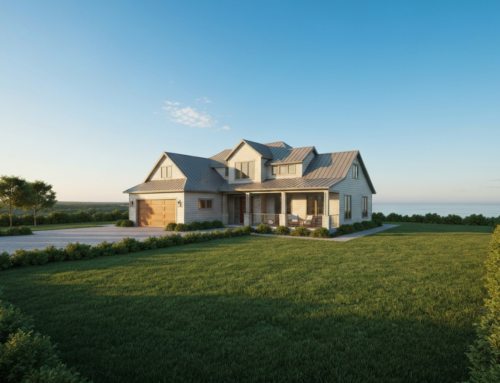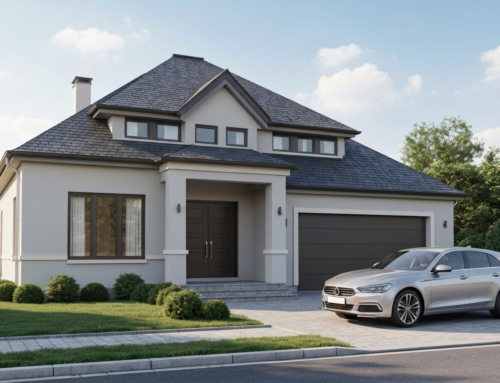Understanding the Basics of Home Insurance in the Grand Strand
Home insurance is a crucial investment for homeowners, providing financial protection against various risks and perils. In the Grand Strand, with its unique coastal environment, understanding the nuances of Grand Strand home insurance options is particularly important. A standard homeowners insurance policy typically covers damages from fire, wind, hail, theft, and vandalism. It also provides liability coverage if someone is injured on your property.
Home insurance policies generally include four essential types of coverage:
- Dwelling Coverage: Protects the physical structure of your home, including walls, roof, and attached structures like a garage or deck.
- Personal Property Coverage: Covers your belongings inside the home, such as furniture, electronics, and clothing.
- Liability Coverage: Provides financial protection if you are legally responsible for injuries or damages to someone else on your property.
- Loss of Use Coverage: Helps cover additional living expenses if your home is uninhabitable due to a covered loss. For example, this could cover hotel stays and meals while your home is being repaired. More on this coverage can be found at loss of use coverage explained.
It’s crucial to carefully review your policy to understand what is covered and what is excluded. For example, most standard home insurance policies do not cover flood damage, which is a significant concern in coastal areas like the Grand Strand.
A Deep Dive into Grand Strand Home Insurance Options
When exploring Grand Strand home insurance options, you’ll find various policy types and coverage levels to suit your individual needs and budget. Some common types of homeowners insurance include:
- HO-3 (Special Form): This is the most common type of homeowners insurance policy. It provides all-risk coverage for your dwelling, meaning it covers all perils except those specifically excluded in the policy. Personal property is typically covered on a named-peril basis, meaning it only covers losses caused by perils specifically listed in the policy.
- HO-5 (Comprehensive Form): This policy offers broader coverage than HO-3, providing all-risk coverage for both your dwelling and personal property. It is the most comprehensive and often the most expensive type of homeowners insurance.
- HO-8 (Modified Coverage Form): This policy is designed for older homes where the replacement cost exceeds the market value. It provides basic coverage for named perils and may use actual cash value instead of replacement cost for settling claims.
- HO-6 (Condo Insurance): If you own a condo in the Grand Strand, you’ll need HO-6 insurance. This covers your personal property, as well as interior walls, floors, and ceilings. It also includes liability coverage. For more on condo insurance, see condo insurance in NC and SC.
- HO-4 (Renters Insurance): If you rent a home or apartment in the Grand Strand, renters insurance protects your personal property and provides liability coverage.
In addition to these standard policy types, you can also purchase endorsements or riders to customize your coverage. For example, you may want to add coverage for valuable items like jewelry, art, or collectibles. You may also want to increase your liability coverage or add coverage for specific perils not included in your standard policy.
Factors Affecting Home Insurance Premiums in Coastal South Carolina
Several factors can influence the cost of Grand Strand home insurance options. Understanding these factors can help you make informed decisions and potentially lower your premiums.
- Location: Homes located in coastal areas are generally more expensive to insure due to the increased risk of hurricanes, flooding, and wind damage.
- Age and Condition of the Home: Older homes may have outdated electrical, plumbing, or roofing systems, which can increase the risk of claims. Newer homes built to modern building codes may qualify for lower premiums. Keeping up with regular home maintenance is vital. For some tips, see home maintenance tips.
- Coverage Limits and Deductibles: Higher coverage limits and lower deductibles will result in higher premiums. Conversely, lower coverage limits and higher deductibles will lower your premiums.
- Claims History: If you have a history of filing claims, your premiums will likely be higher. Insurance companies view homeowners with a history of claims as being at higher risk.
- Credit Score: In many states, including South Carolina, insurance companies can use your credit score to determine your premiums. A lower credit score may result in higher premiums.
- Construction Materials: The materials used to build your home can also affect your premiums. Homes built with hurricane-resistant materials, such as impact-resistant windows and reinforced roofs, may qualify for discounts.
Understanding these factors can empower you to take steps to reduce your home insurance premiums. For instance, you might consider upgrading your home’s roofing or installing storm shutters.
Hurricane Coverage: A Must-Have for Grand Strand Homeowners
Given its location along the Atlantic coast, the Grand Strand is particularly vulnerable to hurricanes. Therefore, hurricane coverage is a critical component of Grand Strand home insurance options. Hurricane coverage typically includes:
- Windstorm Coverage: This covers damage caused by high winds, including damage to your roof, siding, windows, and doors.
- Hurricane Deductible: This is the amount you must pay out of pocket before your insurance company will cover hurricane-related damages. Hurricane deductibles are typically higher than standard deductibles and may be a percentage of your home’s insured value (e.g., 1%, 2%, or 5%).
It’s important to understand how your hurricane deductible works and how it applies to different types of losses. Some policies may have separate deductibles for wind and hurricane damage, while others may have a single deductible that applies to both. It’s equally important to prepare for a hurricane. Guidance can be found at how to prepare for a hurricane.
Keep in mind that some insurance companies may exclude windstorm coverage during a named hurricane. In these cases, you may need to purchase separate windstorm insurance from a specialty insurer.
Flood Insurance Considerations: Protecting Your Grand Strand Home
Flood damage is another significant risk for homeowners in the Grand Strand. Standard homeowners insurance policies do not cover flood damage, so you’ll need to purchase a separate flood insurance policy. Flood insurance is available through the National Flood Insurance Program (NFIP), as well as from private insurers.
Flood insurance covers physical damage to your home and belongings caused by flooding. This includes damage from storm surge, heavy rainfall, and overflowing rivers or streams. Flood insurance policies typically have two types of coverage:
- Building Coverage: This covers damage to the structure of your home, including walls, floors, electrical and plumbing systems, and appliances.
- Personal Property Coverage: This covers damage to your belongings inside the home, such as furniture, electronics, and clothing.
The cost of flood insurance depends on several factors, including your home’s location, elevation, and flood zone. Homes located in high-risk flood zones will typically have higher flood insurance premiums. It’s important to get a flood risk assessment. You can read about how to do that at how to complete a flood risk assessment.
Even if your home is not located in a high-risk flood zone, it’s still a good idea to consider purchasing flood insurance. According to FEMA, more than 20% of flood claims come from outside of high-risk flood zones. For more information, visit the FEMA website.
Tips for Finding the Best Home Insurance Rates in Myrtle Beach
Finding affordable Grand Strand home insurance options requires some research and comparison shopping. Here are some tips to help you find the best rates:
- Shop Around: Get quotes from multiple insurance companies. Rates can vary significantly from one company to another.
- Increase Your Deductible: Raising your deductible can lower your premiums. Just make sure you can afford to pay the higher deductible if you have a claim.
- Bundle Your Insurance: Many insurance companies offer discounts if you bundle your home and auto insurance policies.
- Improve Your Home’s Security: Installing security systems, smoke detectors, and deadbolt locks can qualify you for discounts.
- Maintain a Good Credit Score: A good credit score can help you get lower insurance rates.
- Review Your Policy Annually: Review your policy each year to make sure your coverage limits are still adequate and to shop around for better rates. It’s always a good idea to review your policies. More information on this can be found at reviewing your insurance policies.
Comparing Quotes and Choosing the Right Grand Strand Home Insurance Policy
Once you’ve gathered quotes from multiple insurance companies, it’s time to compare them and choose the right policy for your needs. Don’t just focus on the price; consider the following factors:
- Coverage Limits: Make sure the policy provides adequate coverage for your dwelling, personal property, and liability.
- Deductibles: Choose a deductible that you can afford to pay out of pocket.
- Exclusions: Understand what perils are excluded from coverage.
- Policy Endorsements: Determine if you need any additional endorsements or riders to customize your coverage.
- Insurance Company’s Reputation: Check the insurance company’s financial strength and customer service ratings. You can find this information from rating agencies like A.M. Best. Learn more at A.M. Best.
- Customer Reviews: Read customer reviews to get an idea of the insurance company’s claims handling process and customer service.
Choosing the right Grand Strand home insurance options can be a complex decision, but by doing your research and comparing your options, you can find a policy that provides the protection you need at a price you can afford.
Have questions? Contact us here.






